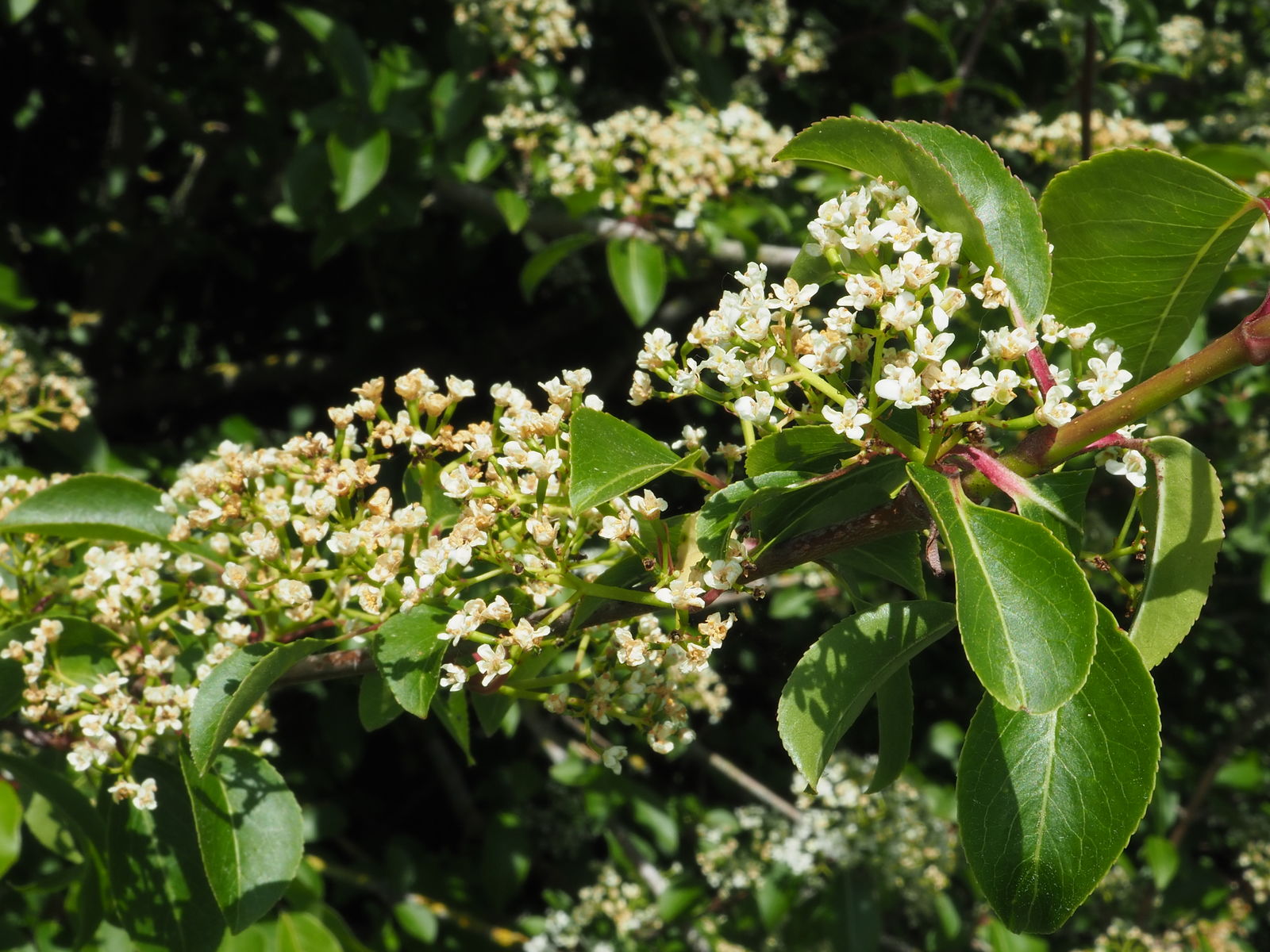Family: Viburnaceae
Author: L.
Bibliography: Sp. Pl.: 268 (1753)
Year: 1753
Status: accepted
Rank: species
Genus: Viburnum
Vegetable: False
Observations: C. & E. U.S.A.
Description
Black haw, scientifically known as Viburnum prunifolium, is a captivating and resilient shrub predominantly found in the central and eastern regions of the United States. Naming conventions given by the esteemed botanist Carl Linnaeus in his seminal work “Species Plantarum”, published in 1753, provide its formal botanical classification.
Belonging to the Viburnaceae family, Black haw is cherished for both its ornamental and medicinal properties. This deciduous plant typically unveils a stunning display of creamy-white flowers during the spring, which later transform into bluish-black drupes by the fall. Its leaves, reminiscent of those found on plum trees, are oblong and finely serrated, contributing to its name ‘prunifolium’ which translates to ‘plum-leaved’.
The shrub thrives in a variety of habitats, ranging from moist woodlands to open fields, reflecting its adaptable nature. It can grow to an impressive height of 12 to 15 feet, sometimes forming dense thickets that provide excellent cover and nourishment for local wildlife. The berries, in particular, are a favorite among birds and small mammals.
Historically, Black haw has been esteemed for its medicinal uses. Native American tribes and early settlers harnessed its bark for remedies aimed at alleviating cramps, muscle spasms, and even as a treatment for various gynecological conditions. This traditional knowledge has been corroborated by modern herbalists, who continue to explore its therapeutic potentials.
Furthermore, Black haw’s robustness and aesthetic appeal make it a popular choice for gardeners and landscapers. It is often planted as a hedge or border plant due to its dense foliage and attractive flowers. The plant is relatively low-maintenance, requiring minimal intervention once established, which adds to its desirability as an ornamental plant.
In sum, Viburnum prunifolium, or Black haw, stands as a testament to the beauty and utility of native flora. Its presence enriches the ecosystems it inhabits, while its historical and contemporary applications highlight its valuable contributions to both natural and cultural heritage.
Common Names
Eng: black haw, blackhaw, black-haw viburnum
En: Black haw, Pflaumenblttriger Schneeball, Schneeball, Blackhaw, Nannyberry, Stagbush, Sweet-haw, Smooth Blackhaw, Black-haw viburnum
Ar: أفلوس خوخي الورق
Zh: 莢迷花
Cs: Kalina višňolistá
Fr: Viorne à feuilles de prunier
Hu: Szilvalevelű bangita
Uk: Калина сливолиста
Synonyms
- Viburnum prunifolium var. globosum (Nash)
- Viburnum bushii (Ashe)
- Viburnum prunifolium var. bushii ((Ashe) E.J.Palmer & Steyerm.)
Distribution
- Alabama (native)
- Arkansas (native)
- Connecticut (native)
- Delaware (native)
- District of Columbia (native)
- Georgia (native)
- Illinois (native)
- Indiana (native)
- Iowa (native)
- Kansas (native)
- Kentucky (native)
- Louisiana (native)
- Maryland (native)
- Michigan (native)
- Mississippi (native)
- Missouri (native)
- New Jersey (native)
- New York (native)
- North Carolina (native)
- Ohio (native)
- Oklahoma (native)
- Pennsylvania (native)
- South Carolina (native)
- Tennessee (native)
- Texas (native)
- Virginia (native)
- West Virginia (native)
- Wisconsin (native)
Additional Images

© copyright of the Board of Trustees of the Royal Botanic Gardens, Kew.

© copyright of the Board of Trustees of the Royal Botanic Gardens, Kew.

© copyright of the Board of Trustees of the Royal Botanic Gardens, Kew.
Bark
Taken Jun 6, 2004 by EOL − Steven J. Baskauf (cc-by-nc-sa)
Taken Jun 6, 2004 by EOL − Steven J. Baskauf (cc-by-nc-sa)
Taken Oct 10, 2015 by EOL − yaoshawn (cc-by-nc)
Taken Jun 6, 2004 by EOL − Steven J. Baskauf (cc-by-nc-sa)
Taken Sep 25, 2021 by Shane Lucas (cc-by-sa)
Leaf
Taken Apr 10, 2017 by Annemarie Ahrens-Stehle (cc-by-sa)
Taken Jul 13, 2021 by Dorothy Montana (cc-by-sa)
Taken May 12, 2021 by peuter collin (cc-by-sa)
Taken May 12, 2021 by peuter collin (cc-by-sa)
Taken May 12, 2021 by peuter collin (cc-by-sa)
Flower
Taken May 24, 2020 by Cola RC (cc-by-sa)
Taken May 4, 2020 by Amy Jarvis (cc-by-sa)
Taken May 5, 2002 by EOL − Steven J. Baskauf (cc-by-nc-sa)
Taken May 2, 2020 by Austin Poston (cc-by-sa)
Taken Apr 22, 2021 by Diane Tiller (cc-by-sa)
Fruit
Taken Jun 6, 2004 by EOL − Steven J. Baskauf (cc-by-nc-sa)
Taken Oct 10, 2015 by EOL − yaoshawn (cc-by-nc)
Taken Aug 25, 2017 by Mason Hoffman (cc-by-sa)
Taken Jun 15, 2021 by joan levenson (cc-by-sa)
Taken Oct 25, 2021 by Katherine Solosky (cc-by-sa)
Habit
Taken May 7, 2015 by EOL − Lena Struwe (cc-by-nc)
Taken Jun 6, 2004 by EOL − Steven J. Baskauf (cc-by-nc-sa)
Taken Nov 23, 2014 by EOL − johnkilmer (cc-by-nc)
Taken May 4, 2014 by EOL − Matthew O’Donnell (cc-by-nc-sa)
Taken Oct 23, 2015 by EOL − karen1781 (cc-by-nc)
Sources
- WFO (No URL)
- IPNI (No URL)
- GBIF (https://www.gbif.org/species/2888608)
- POWO (http://powo.science.kew.org/taxon/urn:lsid:ipni.org:names:326270-2)
- PlantNet (https://identify.plantnet.org/species/the-plant-list/Viburnum prunifolium L.)
Specifications
Growth form: Multiple Stem
Growth habit: Tree, Shrub
Growth rate: Slow
Growth
Ph maximum: 7.5
Ph minimum: 4.8

























